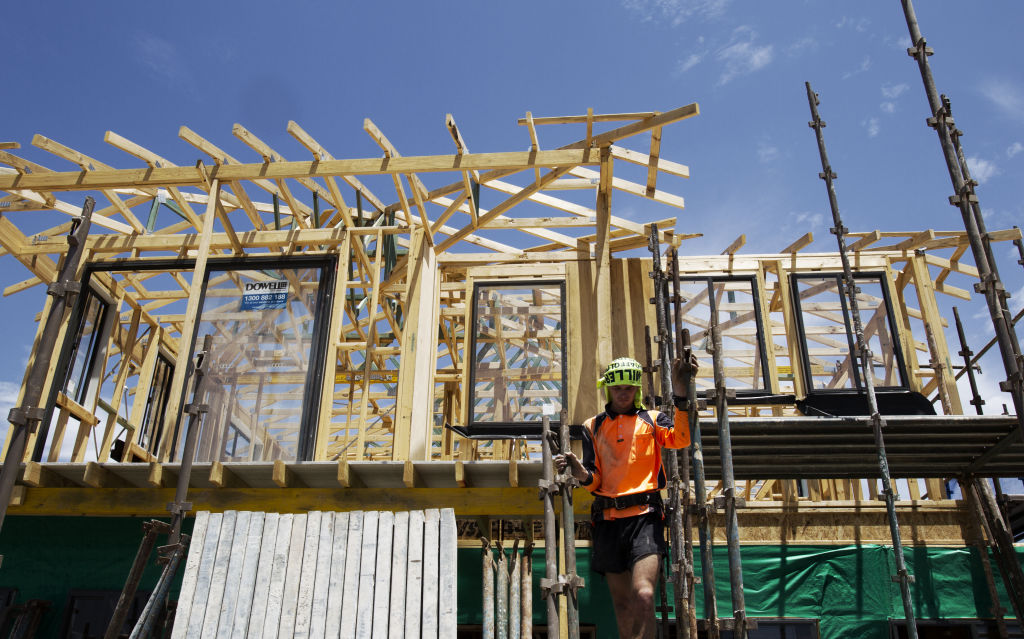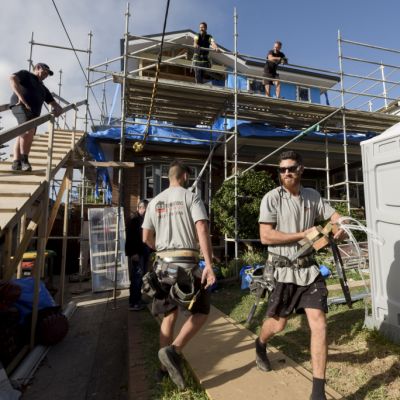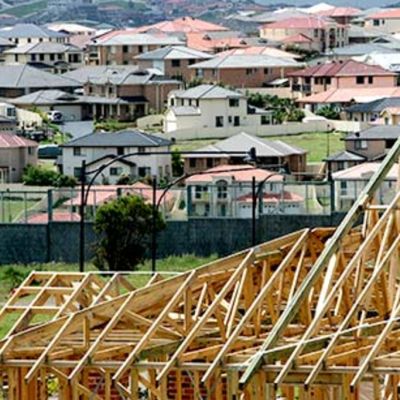Economic boost of new-home building revealed amid bleak jobs data

The construction of homes offers the second largest boost to the economy among all industries in Australia, a report by the National Housing Finance and Investment Corporation’s new research unit has found.
Every $1 million of residential building construction supports nine jobs across the economy, found the analysis Building Jobs: How Residential Construction Drives the Economy.
The report also found that each million spent in the residential construction industry also saw $2.9 million spent across the broader economy.
For each new home built, which costs on average $320,000, three jobs would be supported on average across the economy based on current costs.
Residential construction has one of the highest multiplier effects of any industry, meaning economic activity has a large spillover into other industries and makes a large contribution to jobs and GDP, the report found.
Only non-ferrous metal manufacturing was higher, with residential construction second and non-residential construction third.
The corporation’s chief executive Nathan Dal Bon said construction of residential buildings had the second-highest multiplier effect on the economy due to the industry’s labour-intensive nature.
“The construction sector is integral to the wider economy and the analysis that has been produced points to that bang for your buck,” Mr Dal Bon said.
 Home builders, renovators offered $25,000 grants in federal government package
Home builders, renovators offered $25,000 grants in federal government package HomeBuilder: Retirees and shovel-ready projects to reap benefits of cash splash
HomeBuilder: Retirees and shovel-ready projects to reap benefits of cash splash HomeBuilder: Eight ways that $688 million could be better spent on housing to stimulate the economy
HomeBuilder: Eight ways that $688 million could be better spent on housing to stimulate the economy Land sales skyrocket as buyers pounce on HomeBuilder grants
Land sales skyrocket as buyers pounce on HomeBuilder grants
The research comes as the country lost another 227,000 jobs in May amid the coronavirus-sparked economic shutdown, with the unemployment rate reaching 7.1 per cent, its highest level since 2001.
Australia has now lost more than 824,000 jobs over the past two months, figures released on Thursday by the Australian Bureau of Statistics revealed.
The corporation’s senior advisor Hugh Hartigan said building a home drew on multiple industries.
“You’re not just hiring labourers on site. You’re also drawing in professional services, architects and purchasing raw material. Also transporting those raw materials,” Mr Hartigan said.
The first round of construction and the industrial production components accounted for about 50 per cent of the economic activity from home constructions, the report found.
Wages and salary earned from the construction then accounted for 35 per cent of the economic activity.
Consumer spending from that money accounted for the remaining 15 per cent of the $2.9 million created as a result of the home construction.
For each build, about 45 per cent of jobs created could be considered “on-site” jobs, while the remaining 55 per cent could be considered “off-site” jobs, the report found.
While the industry directly employs about 134,000 jobs, according to ABS employment data from the financial years 2017 and 2018, that creation of jobs may look different in coming months, according to Mr Dal Bon.
Factors set to influence the speed of construction activity and the creation of related jobs include confidence, employment numbers, property prices and interest rates.
“It’s very difficult to attach any weight on these individual factors. We will have to wait and see how those play out across the economy,” he said.
When asked whether the HomeBuilder program was a good way to create jobs, Mr Dal Bon said: “That’s probably a better question for the government.”
But developers have reported a spike in inquiries and sales for new-home buyers.
We recommend
We thought you might like
States
Capital Cities
Capital Cities - Rentals
Popular Areas
Allhomes
More
- © 2025, CoStar Group Inc.






